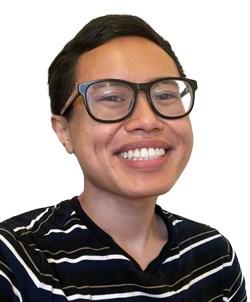

When Colton Underwood of “The Bachelor” came out, I honestly wasn’t surprised. Out of 25 seasons of the show, one of the bachelors was bound to be a little gay.
What shocked me even more, however, was that he soon got his own Netflix show. Not only that, but he was going to have famous gay Olympian, Gus Kentworthy, as his personal “gay guide” through queer culture and life after coming out.
It’s always great when someone comes to terms with their sexuality and expresses it openly. I applaud Underwood’s bravery and courage to share something so personal with millions of people. And his announcement has probably meant a lot to closeted fans and helped push for more queer visibility in the media.
But Underwood’s reward of a show highlights the underlying homophobia in mainstream society: a preference for “straight-passing,” masculine, or masc, queer men over feminine, flamboyant queer men.
This isn’t a new concept. The idea that masc queer men are superior pervades heterosexual thought. Men such as Matt Bomer, Neil Patrick Harris and Ricky Martin are seen as “more straight” because of their masculinity, breaking the stereotype of the effeminate gay man. Masc queer men also don’t “look” gay and often enjoy stereotypically masculine things such as sports and power tools.
In contrast, the effeminate gay man is gay, in all capital letters. Think RuPaul, Adam Lambert and Jonathan Van Ness. They probably watch “RuPaul’s Drag Race” and listen to Ariana Grande. This type of queer man is often considered more feminine because of the emphasis on looks through fashion and cleanliness. These men also may have higher-pitched voices and are more flamboyant and expressive, fueling the idea that they are “diet women.”
But the differences between these two types of queer men extend far beyond their characteristics. Heteronormativity — and the oppression that accompanies it — treats them differently.
I remember looking at the Instagram profile of Jonathan Van Ness from “Queer Eye” a few years back. After looking through his sea of photos, ranging from his luscious hair to incredible style sense, I went through the comments section.
Some of the comments were supportive and kind, but most called Van Ness various combinations of demeaning adjectives, including slurs, with a lot of viewers attacking him for being feminine. (I honestly have to give the homophobes some props for their creativity in insults.) Nevertheless, this was a textbook case of homophobia mixed with misogyny, perpetuating the idea that masculinity is the standard. Since Van Ness is outwardly feminine, many consider him “too gay,” and therefore lowlier than his more masculine gay counterparts.
Van Ness’ costar, Antoni Porowski, who is the masculine cooking expert of the show, got a wildly different reception. When the show first premiered, he instantly became a fan favorite. Everyone on my Twitter timeline talked about how hot he was and created memes about his love for avocados. Out of the entire “Queer Eye” cast, I’d argue Porowski has the least interesting personality. Van Ness carries the show, but Porowski gets all the attention.
I don’t mean to suggest that Porowski has never experienced homophobia in his life. But queer men who pass as straight have some privilege.
This frustrates me because feminine queer men have often been at the forefront of championing LGBTQ+ rights. The 1969 Stonewall riots, credited for being the beginning of the modern LGBTQ+ rights movement, had effeminate twinks and drag queens protesting with transgender women and butch lesbians. Feminine queer men have changed societal conceptions of what makes a man, regardless of sexual orientation, and consistently blur the rigid line separating gender roles. They have done so much for gay rights but are paid dust while masc queer men reap all the benefits.
Through my youth, the immense pressure to be a masculine gay — and conform to social expectations — controlled my every action. I’ve written about how ashamed I was of watching “RuPaul’s Drag Race” and listening to pop stars such as Britney Spears. I convinced myself these things were “too gay” and that if I wasn’t straight, I wasn’t going to be “like those other gays.” I’d scoff at other gay men for wearing makeup or listening to Taylor Swift’s latest album, thinking I was different and cool. In reality, this was self-projected, internalized homophobia.
I’m happy that Colton Underwood has come to terms with his queerness, but the reward of a Netflix show puts him and other masc queer men on a pedestal while feminine gay men are given scraps and pieces. Although some feminine queer men do enjoy the spotlight, they are not given the same platforms. “RuPaul’s Drag Race” was on a more niche television network before getting picked up by VH1 eight years later. It faced so much backlash before it went mainstream, but it definitely paved the way for shows such as Underwood’s to be on a platform as huge as Netflix.
If Underwood was an effeminate twink, I’m not sure he would’ve been given his own series right after he came out. If that was a reward for coming out, I want my own Netflix show for God’s sake.
Nicholas Clark writes the Monday column on LGBTQ+ issues in media and politics. Contact him at [email protected]